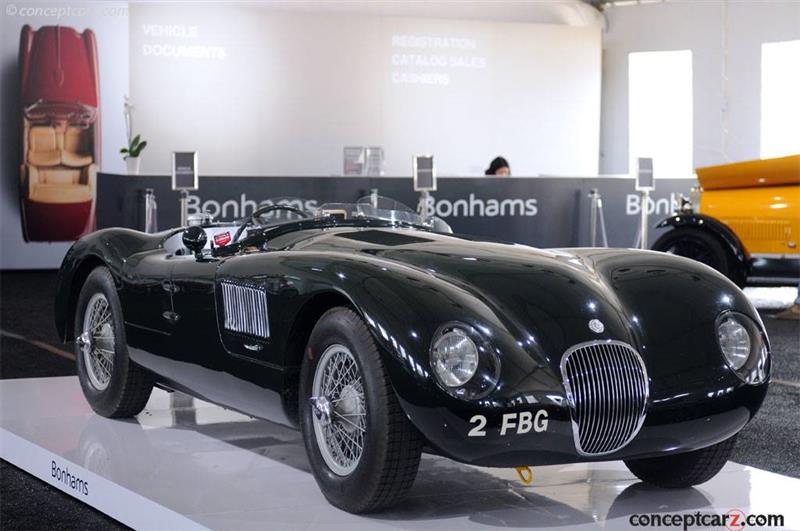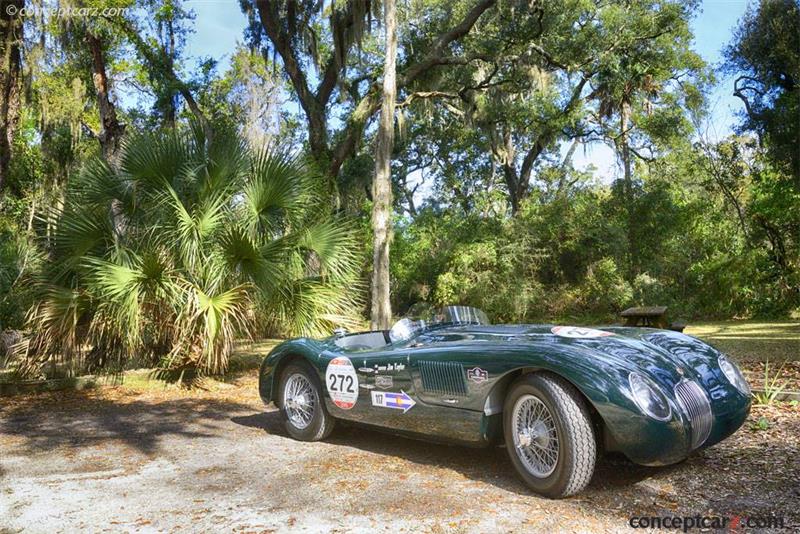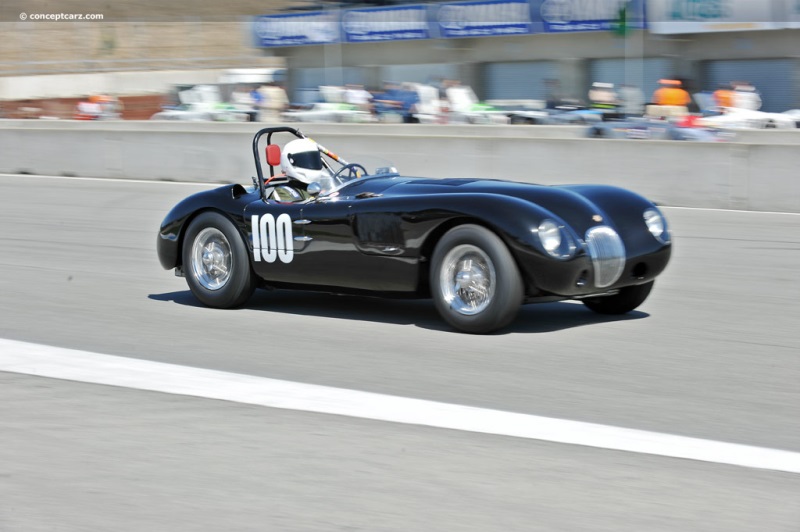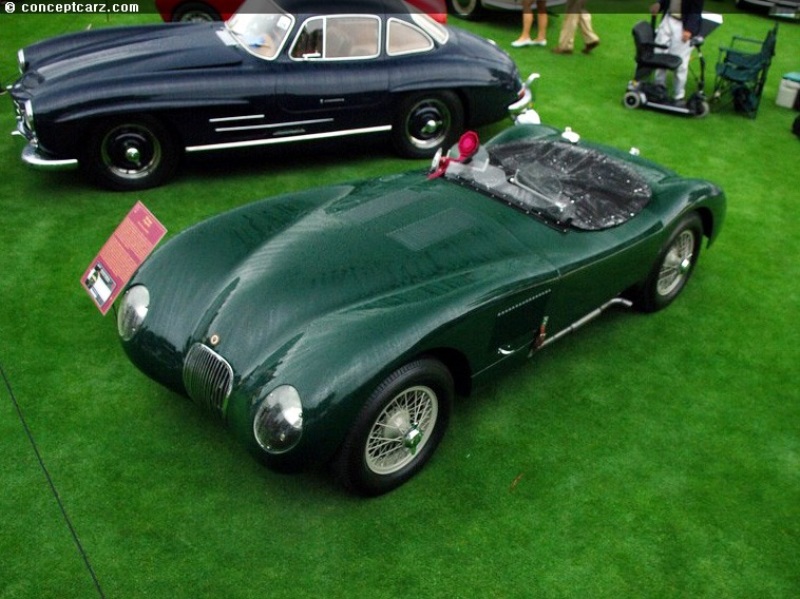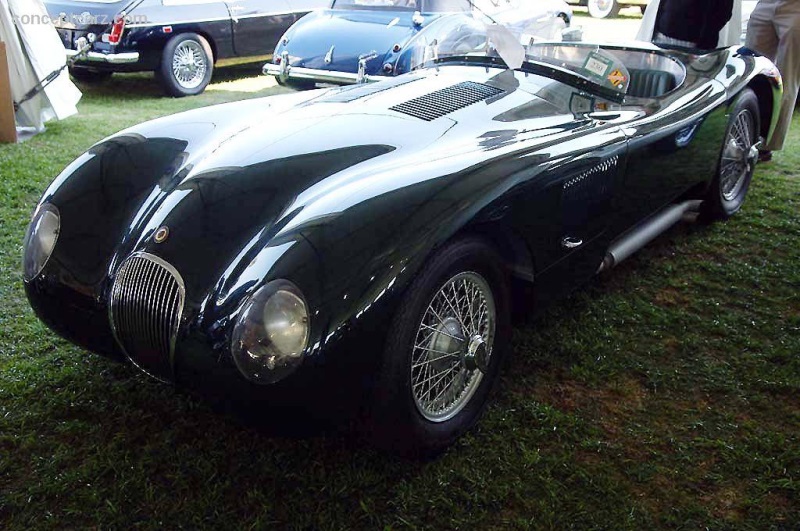Jaguar, a company that had never built a competition model, brought their new and un-raced C-Type to Le Mans, the highest level of international motor racing, where they beat the best teams and fastest race cars in the world. During the company's domination of the LeMans event in the 1950s, the C-Type won twice, and few sports-racing cars have achieved such legendary status.
Chassis #: 771577
View info and historyAfter World War II, the Jaguar Company focused its efforts on building a high-performance luxury saloon, a sports car was an afterthought. The phenomenal success of the forth-coming Jaguar XK120 was completely unexpected by Sir William Lyons and the team at Browns Lane, whose post-WW2 focus was the MKVII Saloon. With the new DOHC straight-six engine, it occurred to Lyons that a sports car version with the engine could outperform nearly anything else in production at the time. Additionally, a limited run of these halo cars would provide Jaguar the opportunity to fine-tune its new masterpiece before committing it to the scale of production necessary for the MKVII. The new XK engine was an aluminum-alloy cylinder-headed, dual overhead camshaft, 3.4-liter, seven main bearings, straight-six. The 'X' represented 'experimental' while the 'K' was for the 'K' series. The 'XK120' was in reference to its estimated top speed of 120 mph. The development team was headed by William Heynes and aided by Walter Hassan and Claude Bailly. With the help of twin SU carburetors, the 3.4-liter engine delivered 160 horsepower which was sent to the rear wheels via a four-speed gearbox which was bolted directly to the engine. A styling revolution was happening in Italy and the United States during this time, as manufacturers were beginning to introduce their first all-new post-War products. Stylists such as Raymond Loewy and Pininfarina were creating modern designs with full-width bodies and integrated fenders. William Lyons was inspired and led him to create this timeless design. Drawing inspiration from around the globe, Jaguar created a design with sensuous curves, wind-cheating angles, and an elegant stance. When equipped with the new XK engine, the 120 mph estimates were found to be inaccurate, as an XK120 (chassis 670002 - the second example built) in Jabbeke Belgium would achieve a top speed of 132.6 mph in May 1949, setting a production car record. It achieved 126.448 mph over the flying mile with hood and side screens erected, and 136.596 mph in stripped form. That same car was raced a few months later and won the Daily Express production car race at Silverstone where it was piloted by Leslie Johnson. Peter Walter was second in a sister car. Soon the XK120 won its first laurels in the world of rally, courtesy of Ian Appleyard driving chassis number 660044. The first production, chassis number 670003, was delivered to Clark Gable. 
Roadster
Chassis #: XKC 018The decision to create the XK120 was made just six weeks before its introduction at the Earls Court Motor Show on October 27th. They began with a fully equipped MKV box-type chassis with 1-foot 6-inches removed from the middle. Wishbones and torsion bars comprised the front suspension while transverse leaf springs and a live axle were used at the rear. Twelve-inch Lockheed drum brakes were placed at all four wheels, and the steering was by recirculating ball with a telescopically adjustable steering column. The brakes were prone to fade so some examples were fitted with Alfin (ALuminium FINned) brake drums to help overcome the fade. The coach-built, aluminum paneled body structure on ash framing was mounted on a steel chassis that was chosen since Jaguar did not expect to sell more than 200 examples in the first year.The euphoria the Bronze XK120 show car received immediately prompted Sir William Lyons to rethink his initial plan for hand-building a few hundred Roadsters. In the end, production spanned five years with Roadster, Fixed Head Coupe, and Drophead Coupe body styles, and a total production volume of 12,055 examples. The model spawned the XK140 and 150, both of which were successful in their own right. The XK engine was equally successful with the basic design that helped power a whole range of Jaguars right up until the late 1980s. After 242 aluminum-bodied examples were created, a new all-steel paneled body was developed in conjunction with the Pressed Steel Fisher Company, which retained the appearance of the coach-built original while differing in minor external details. Aluminum doors, bonnet, and boot lid were retained. The C-Type Sports Racing Car
Sir William Lyons watched as a team of XK120s competed at the 24 Hours of LeMans in 1950, and while the cars performed admirably (with one finishing in the top 12 and Leslie Johnson's care spending considerable time in 4th place), he recognized that further development work on the chassis would be necessary in order to be truly competitive. Thus began the C-Type Project, with the 'C' representing 'Competition').
Roadster
Chassis #: XKC 017
View info and historyLyons and engineer Bill Heynes were convinced that a more aerodynamic and lighter body with modified XK120 mechanical components had a strong chance of vying for outright victory. Development promptly commenced, starting with a new lightweight tubular space frame, one of the very first applications of the technique in sports car construction. The XK engine was given a new cylinder head, racing pistons, an un-muffled dual exhaust system, and high-lift camshafts, bringing the motor's output to 200 horsepower. The rear suspension was redesigned with additional positioning links to cope with cornering at speed. The new exquisite and aerodynamic coachwork was the most visual change, with the fluidic and curvaceous design jointly developed by William Heynes, R J (Bob) Knight, and later Malcolm Sayer. The XK120 had been created in a mere six weeks and it seems fitting that the first three C-Types were hand-built in only six weeks. These were the first purpose-built race cars for Jaguar specifically designed to win at Le Mans.Initially known as the XK120C (again, C for competition), the C-Type debuted at Le Mans in 151 with a team of factory-sponsored cars. Oil line issues sidelined two of the three entries (the cars driven by Stirling Moss and Jack Fairman, Leslie Johnson, and Clemente Biondetti), with the car driven by Peter Walker and Peter Whitehead taking the overall victory, something that a British car had not done in nearly twenty years. A privately entered Jaguar XK120 owned by Robert Lawrie and co-drive by Ivan Waller finished in 11th place. The race-winning car had won convincingly, 77 miles ahead of the 2nd place finisher, and set the following records: fastest lap speed of 105.232 mph, 24-hour speed record of 93.495 mph, and greatest distance traveled in 24 hours at 2,243.886 miles.The XK120 had created a sensation upon its debut and the C-Type followed in its footsteps, with demand soon outpacing production. They were sold for approximately $6,000 each which was about double the price of an XK120. A total of 53 C-Types were built, 43 of which were sold to privateers in the United States. 
Roadster
Chassis #: XKC 017
View info and historyJaguar returned to Le Mans with the C-Type in 1952, with modifications to the aerodynamics to increase the top speed in response to reports about the speed of the Mercedes-Benz 300SLs. The rearrangement of the cooling system made the cars susceptible to overheating, and all three C-Types retired early from the race. The car driven by Peter Whitehead/Ian Stewart and Tony Rolt/Duncan Hamilton blew head gaskets, and the Stirling Moss/Peter Walker car that had the only full-sized radiator hurriedly fitted, lost oil pressure after a mechanical breakage.Future testing revealed that the cooling system alterations, an undersized water pump pulley, inadequately sized tubing, and the distance of the header tank from the radiator, had caused the overheating more than the aerodynamic changes. The changes to the body shape, however, had reduced downforce to the tail resulting in directional instability at speeds exceeding 120 mph.In preparation for the 1953 Le Mans race, the C-Types received thin-gauge aluminum bodies, thinner gauge steel for some of the chassis tubes, a fully synchronized gearbox, and triple-plate clutch, an additional upper link to the rear axle, lighter electrical equipment, a rubber aircraft bag fuel tank bladder, disc brakes, and three DCO3 40mm Weber carburetors replacing the original H8 sand cast SU units. 
Roadster
Chassis #: XKC007
View info and history
Auction entries : 1For the second time in only three attempts, the Jaguar C-Type won at LeMans, with the winning car driven by Duncan Hamilton and Tony Rolt averaging 105.85 mph, which was the first time Le Mans had been won at an average speed exceeding 100 miles per hour. The C-Type also placed second and fourth.The three C-Types that contested the 1953 LeMans race were chassis number XKC 051, XKC 052, and XKC 053, and were among the final examples constructed. They were the only lightweight C-Types built by the factory and were the first disc-brake-equipped entrants to ever contest Le Mans, being the only cars so outfitted among the 1953 field. This setup proved to be quite significant in the race's outcome. Chassis 051 had finished first, 053 in second, and 052 a few laps behind in 4th. Chassis number 052 had been tested by Norman Dewis in preparation for the racing, and wore number 19 during the race, and was piloted by Peter Whitehead and Ian Stewart. Stewart concluded the driving duties at the end of the 24 hours, with 052 completing 297 laps with an average speed of nearly 167 km/h. Briggs Cunningham's C5-R prevented a 1-2-3 by the Coventry team by finishing 3rd.The C-Type proved to be one of the greatest all-encompassing sports racing cars of the 1956s and 1960s, winning at LeMans and racing in the Mille Miglia, Goodwood, and the Monaco Grand Prix. They competed all over the United States, Watkins Glen, Laguna Seca, and Sebring, one even ran the Carrera Panamerican. The C-Type brought Jaguar international recognition and was the first-ever competition model from a company that had no experience in international motor racing. It was well-balanced, fast, and breathtakingly beautiful, capable of racing, or being driven on the road.
by Daniel Vaughan | May 2020
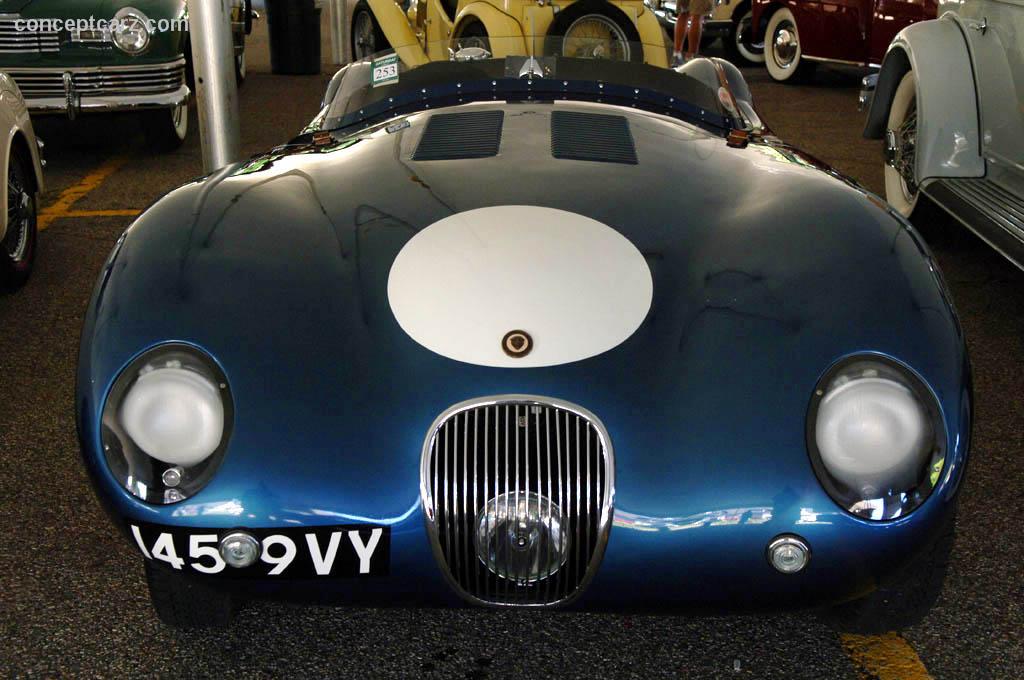
Chassis #: 771577
View info and history
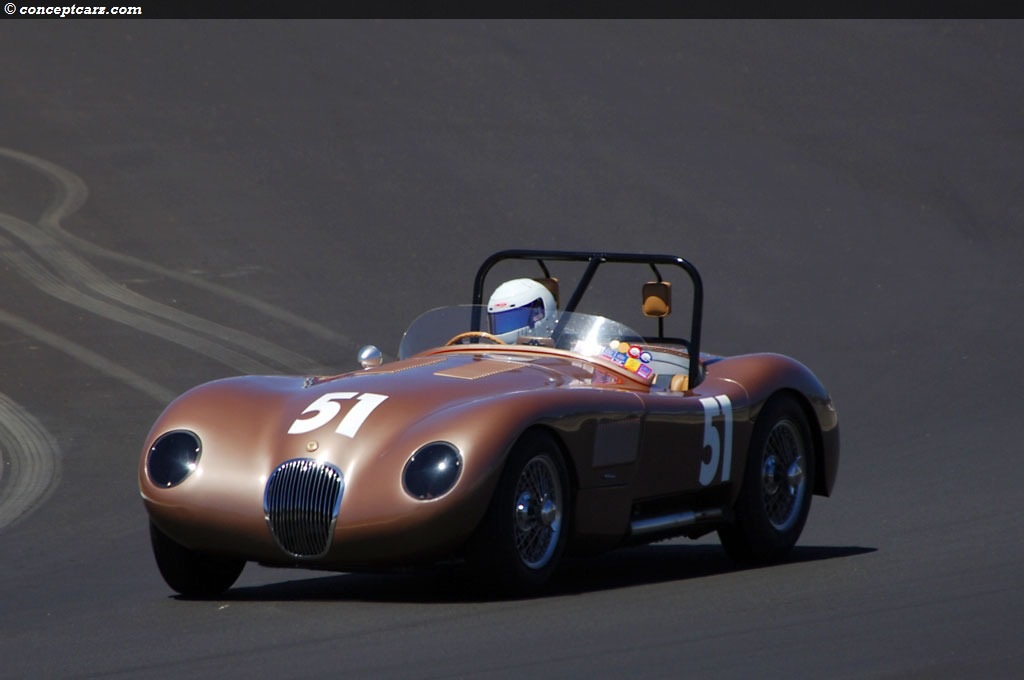
Roadster
Chassis #: XKC 018
Sir William Lyons watched as a team of XK120s competed at the 24 Hours of LeMans in 1950, and while the cars performed admirably (with one finishing in the top 12 and Leslie Johnson's care spending considerable time in 4th place), he recognized that further development work on the chassis would be necessary in order to be truly competitive. Thus began the C-Type Project, with the 'C' representing 'Competition').
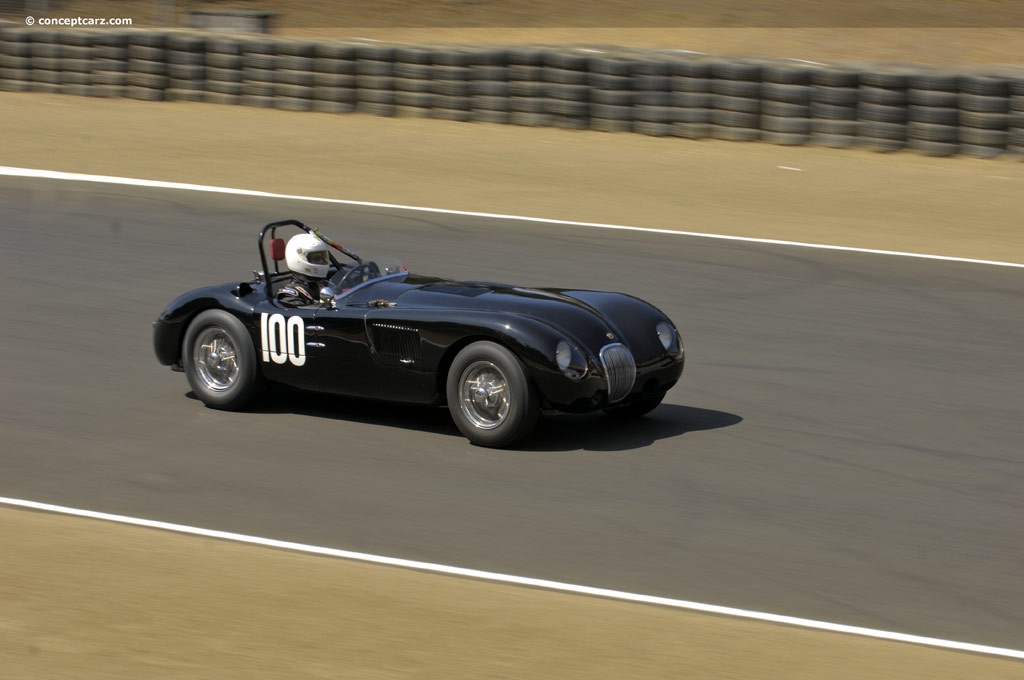
Roadster
Chassis #: XKC 017
View info and history
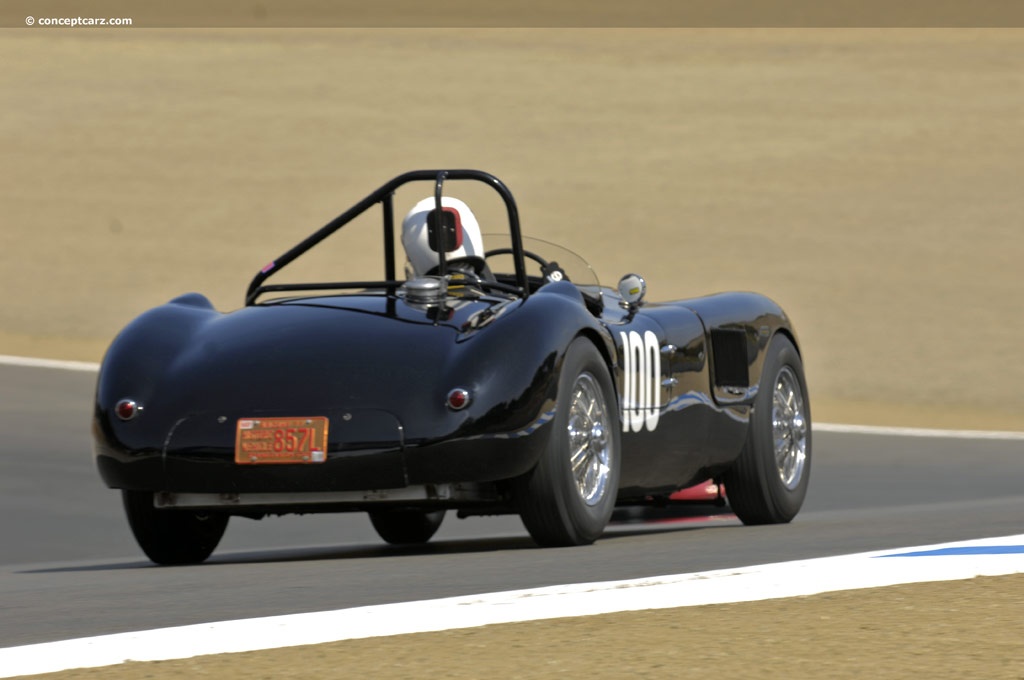
Roadster
Chassis #: XKC 017
View info and history
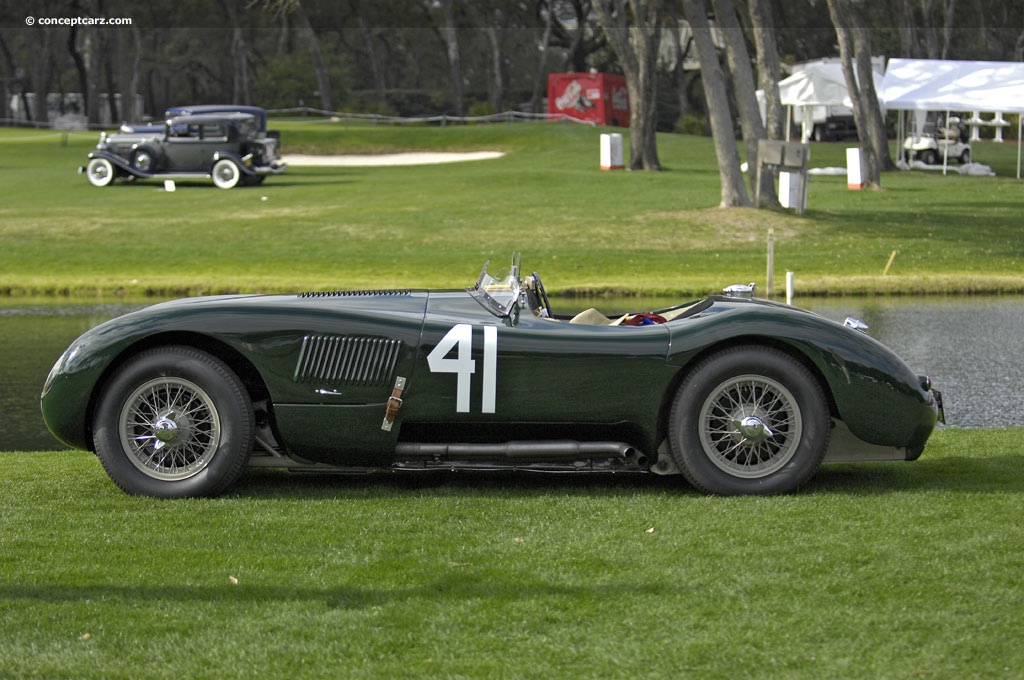
Roadster
Chassis #: XKC007
View info and history
Auction entries : 1
by Daniel Vaughan | May 2020
Related Reading : Jaguar C-Type History
The Jaguar C-Type was produced from 1951 to 1953 with an estimated 54 being produced. After a team of Jaguar XK 120C, the C representing competition, vehicles had an excellent showing at LeMans, William Lyons commissioned a car to be built that could contend for the overall victory. Malcom Sayer designed the aerodynamic body and Bob Knight was responsible for the lightweight, multi-tubular,....
Continue Reading >>
Continue Reading >>
Similar Vehicles
Similar Automakers
1952 Jaguar C-Type Vehicle Profiles
Recent Vehicle Additions
Related Automotive News

The New Jaguar C-type Continuation
Jaguar Classic is creating a limited run of new hand-built examples of the iconic Jaguar C-type to celebrate its 70-year anniversary
The C-type Continuation will be officially unveiled to the public at the annual Concours of Elegance at Hampton Cou...

Celebrating 70: Jaguar C-type joins Classic Continuation family
Jaguar Classic will create a limited number of new C-type Continuations to celebrate 70 years of the double Le Mans-winning legend
Jaguar Classic is celebrating 70 years of the C-type by creating a strictly limited number of new hand-built ex...

Sir Stirling Moss : Remembering a Racing Legend
Five years ago, Sir Stirling Moss was the Honoree at the 20th annual Amelia Island Concours dElegance. He was the honoree of the first Amelia Island Concours in 1996 and the only person to be honored twice by the Amelia. Several of the 84 cars he...

Famous & Rare Prewar MGs Star At 'The Amelia' 2018
MG will be honored at the 23rd annual Amelia Island Concours dElegance on March 11, 2018.
The sports cars from Morris Garages were founding members of postwar American sports car racing. The 23rd annual Amelia will celebrate marque-founder Cecil...
RRDC VOTES IN 37 NEW MEMBERS FOR 2013
HILLIARD, Ohio (Nov. 7, 2013) - Thirty-seven race-car drivers and motorsports professionals have been voted into the Road Racing Drivers Club in 2013. The group includes 13 Regular Members from the open-wheel and sports-car racing ranks, 20 Associate...

































